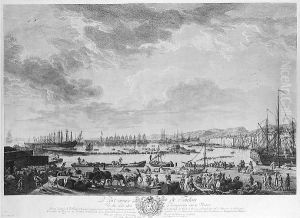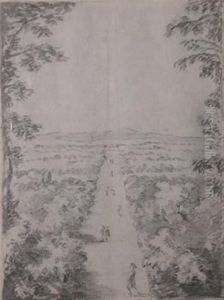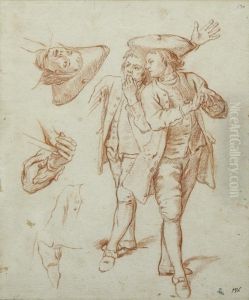Nicolas Cochin Paintings
Nicolas Cochin, born in 1610, was a notable figure in the 17th-century French art scene, primarily recognized for his work as an engraver. Cochin hailed from a family deeply entrenched in the arts; his lineage boasted several prominent artists, illustrators, and engravers, which naturally paved the way for his entry into the artistic realm. Despite the overshadowing fame of his son, Charles-Nicolas Cochin, Nicolas made significant contributions to the art of engraving in his own right, establishing a legacy that would influence the Cochin family's artistic endeavors across generations.
Cochin's work is characterized by its meticulous detail and the elegance of its execution, hallmarks of the engraving craft during the Baroque period. He engaged with a variety of subjects, ranging from religious themes to landscapes and portraits, thereby showcasing the versatility and breadth of his skill set. His engravings not only served as artworks but also played a crucial role in the dissemination of visual culture during his time, acting as illustrations for books and reproductions of paintings, thus reaching a wider audience than original works of art could at the time.
The artistry of Nicolas Cochin was deeply intertwined with the cultural and artistic movements of 17th-century France, reflecting the Baroque's intricate styles and the beginnings of the Rococo movement that his descendants would later fully embrace. His legacy, carried forward by his son and other family members, continued to shape French art, particularly in the realm of engraving and illustration, long after his death in 1686. Through his contributions, Nicolas Cochin remains a significant, though perhaps less recognized, figure in the history of French art, embodying the transition between the Renaissance's lingering influence and the burgeoning Rococo aesthetic that would dominate the 18th century.


